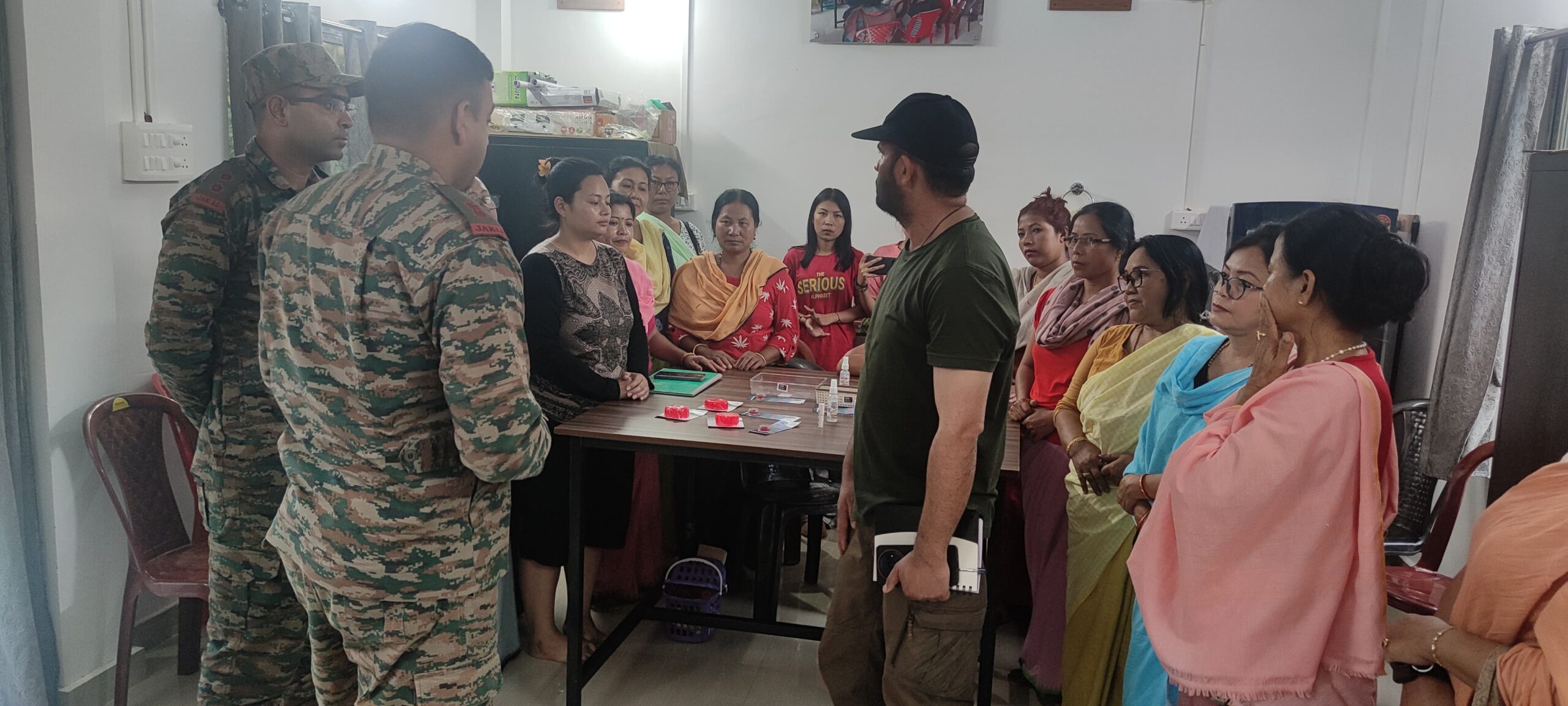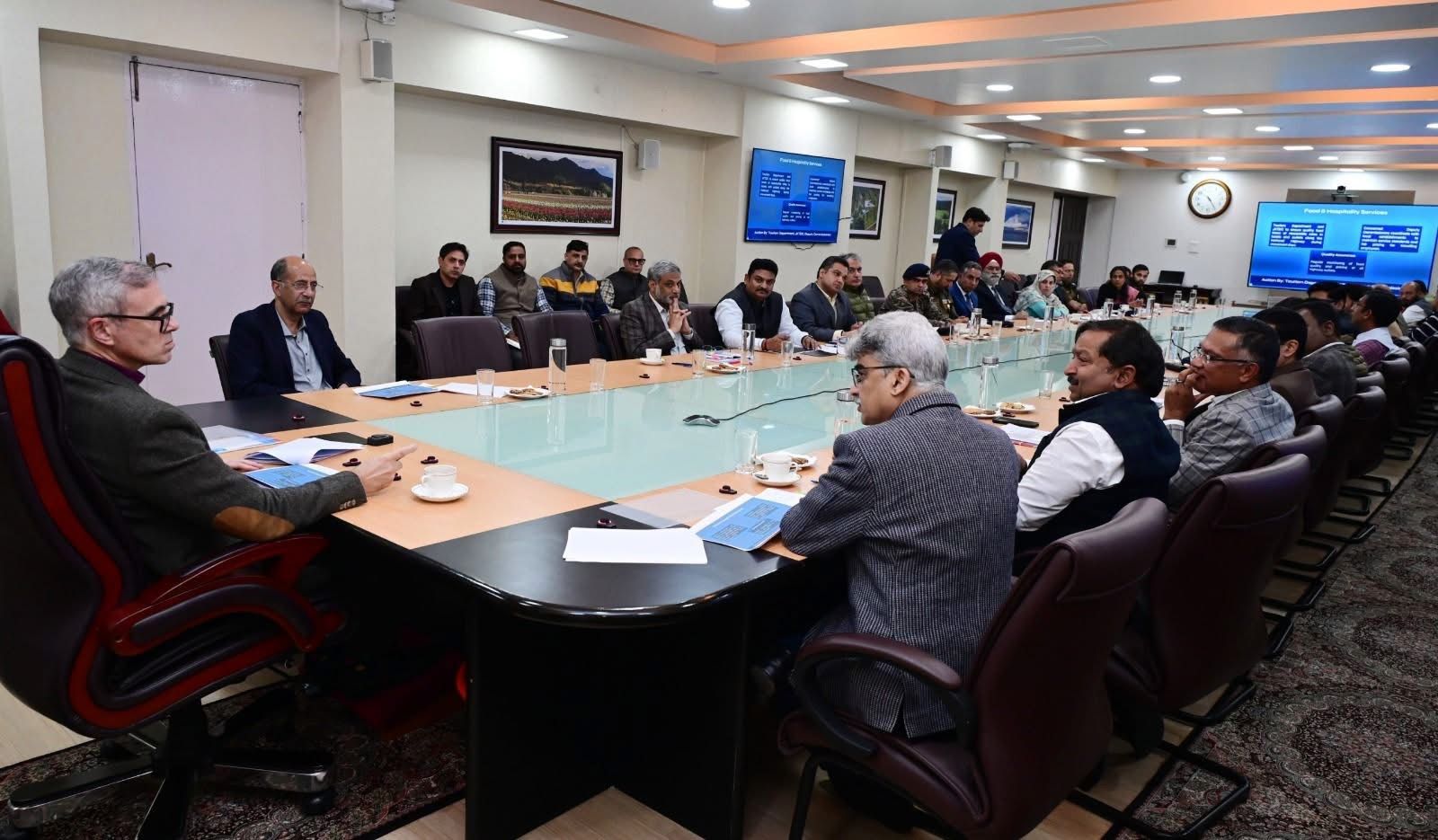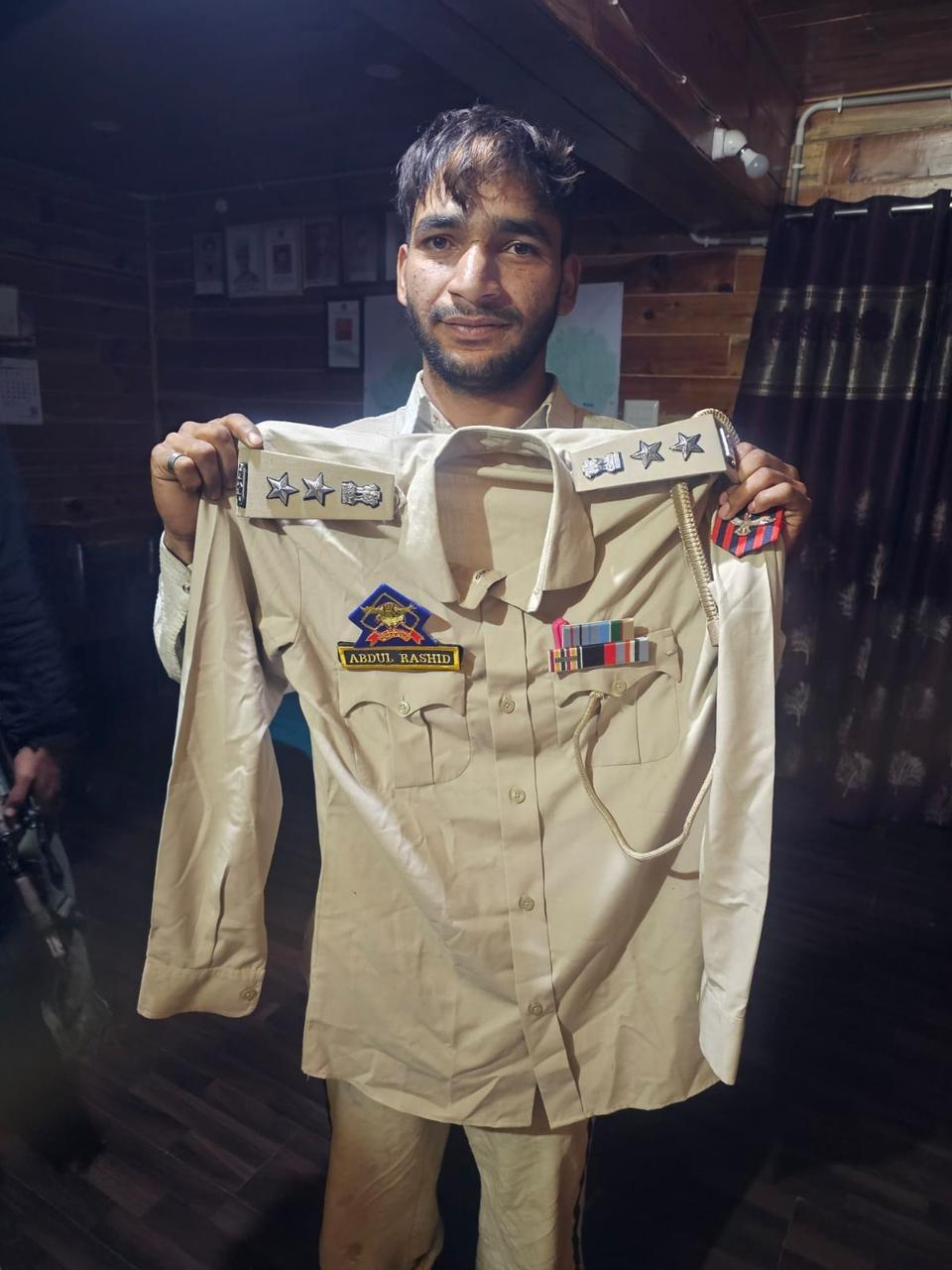
By M S Nazki
-But some things do hurt…………But this is not a story about cribbing!
-Cosmetic Centre Phubala : The Indian Army, in collaboration with the Aseem Foundation , established this Cosmetic Centre at Phubala village under Operation Sadbhavana. It was officially inaugurated by Lt. Gen. Abhijit S. Pendharkar, General Officer Commanding Spear Corps.
-Luxury fashion is a highly competitive and ever-evolving industry. It’s no secret that the global market for luxury goods is on the rise, and consumers are increasingly willing to invest in high-quality, exclusive, and well-crafted products.
-From high-end fashion houses to niche brands, the industry offers a plethora of choices that cater to different tastes, styles, and budgets.
-Throughout the years, the industry has seen significant changes in consumer behavior and market trends. However, the following brands have managed to stay relevant and maintain their position as the top players in the luxury fashion industry.
-Brands dominating fashion:
-CHANEL: Chanel is a brand with a legacy etched in fashion history. Some of its iconic designs include the little black dress, Chanel No. 5 perfume, Chanel 2.55 bag, tweed outfits, pearl necklaces, and ballet flats. Coco Chanel, a legendary designer, revolutionized women’s fashion by introducing shoulder bags and yachting pants over 100 years ago. Her goal was to create more comfortable, masculine clothing that did not require corsets.
Building on Coco’s legacy, Karl Lagerfeld modernized her original designs in the ’80s and reintroduced them, leveraging Chanel’s heritage and brand elements into new designs like the interlocking CC logo on belts and pearl jewelry, mixing tweed with grunge style. This strategy saved Chanel from financial ruin.
Exclusivity, value-based marketing, and legacy are some of the key factors that have made Chanel a $13.2 billion (about $41 per person in the US) brand. Chanel has been successful in maintaining its position in the luxury fashion market through its heritage designs, attention to detail, and the unique experiences that it offers to its customers. The brand’s commitment to quality and exclusivity has created a loyal following among fashion-conscious consumers who appreciate the brand’s rich history and iconic designs.
-LOUIS VUITTON: Louis Vuitton, part of the LVMH group, the world’s largest luxury conglomerate that also owns Dior, Fendi, Givenchy, Tiffany, and 75 other brands, is one of the most counterfeited brands in the world. This is mainly due to its iconic designs that have remained relatively unchanged over the 167 years, limited supply, and a strict “NO SALE” policy. Despite the challenges posed by Covid, LV reported increased revenue in Q3 of 2020, thanks to its domination in China, Japan, and Korea – the world’s biggest luxury goods markets.
Louis Vuitton has always been trendy, attracting young consumers by diversifying into streetwear and implementing a drop model where collections are released with limited stock and time without prior notice. The brand also uses endorsement deals with the biggest names in Asia, such as Mulan’s Liu Yifei, Squid Game’s Jung Ho-Yeon, tennis player Naomi Osaka, and BTS.
Through these strategies, Louis Vuitton continues to remain relevant and popular, especially among younger generations. The brand’s dominance in the luxury goods market is set to continue as it continues to diversify and expand into new markets.
-GUCCI: Gucci, founded in Florence in 1912, is currently the second most valuable brand in the world. Although Gucci initially focused on manufacturing luxury bags, such as the famous Gucci bamboo bag, canvas suitcase, and The Jackie, they only began making clothing in 1968. Unfortunately, under Maurizio Gucci’s leadership, the brand almost went bankrupt.
However, in 1994, Tom Ford joined Gucci and transformed the brand into a major player in luxury fashion. The famous ’95 Fall collection and hypersexual brand image gave new meaning to the phrase “Sex sells.” Today, Gucci remains a favorite among Gen Z and millennials, who make up a predicted 40% of the luxury market by 2035.
Gucci strategically stays at the forefront of pop culture, with everyone from actor Xiao Zhan and K-pop idols IU and Kai to Harry Styles seen sporting the brand. As influencers continue to love logomania, Gucci will continue to dominate the luxury fashion market.
-PRADA: Founded in 1913 by Mario Prada, the brand initially started as a small leather goods store in Milan. However, it wasn’t until the 1980s that Prada became a household name in the fashion world, thanks to Miuccia Prada, Mario’s granddaughter, who took over the family business and transformed it into a global fashion powerhouse.
Prada has a strong presence in the luxury retail market with products, including clothing, bags, shoes, and accessories, which are sold through its own stores, as well as through high-end department stores and boutiques. Prada’s ability to create a consistent brand identity and maintain a high level of quality across its product lines has contributed to its success and longevity in the industry.
In recent years, the brand has made significant efforts to reduce its carbon footprint and promote eco-friendly practices. For example, Prada has launched a sustainable line of nylon products, made from recycled materials, and has implemented energy-saving measures in its stores and factories.
-DIOR: Christian Dior is undoubtedly one of the most celebrated fashion designers in history, and his brand, Dior, is a testament to his legacy. His “New Look” collection in the 1940s and 1950s revolutionized the fashion industry and marked a significant turning point in the history of fashion. Since then, Dior has become a household name, synonymous with luxury, glamour, and sophistication.
One of the key strategies that Dior employs to reinforce its brand image and legacy is through ambitious exhibitions that showcase its history and heritage. The recent Christian Dior: Designer of Dreams exhibition in New York City was a resounding success, attracting thousands of visitors who were captivated by the brand’s rich history and iconic designs. Similar exhibitions like Esprit Dior and the 2019 New Look Revolution in London have also been highly successful, with almost 600,000 people attending the latter.
Apart from its exhibitions, Dior’s success can also be attributed to its strong presence on social media. With 45 million Instagram followers and 1 billion views on its WeChat hashtag challenge, Dior is a powerhouse when it comes to social media marketing. It was also ranked No.1 on Launchmetrics’ media impact value list, further demonstrating the brand’s influence and reach.
In addition to its fashion line, Dior has also been highly successful in the beauty industry, with its cosmetic line being a major contributing factor to the brand’s overall success. With a focus on high-quality products and innovative packaging, Dior’s beauty line has become a must-have for many consumers around the world.
-Some stories do not get old:
-Here is a short story about a girl and cosmetics, focusing on themes of self-discovery and the evolving use of beauty products:
-Eliza, a young girl, found a magical, old compact in her grandmother’s attic, sparking her fascination with cosmetics. Growing up, she experimented with various products, initially using makeup to fit in but later to express her creativity and confidence. The story follows her journey as she learns that makeup is a form of art and self-expression, not a tool to conceal flaws or please others, ultimately discovering that true beauty comes from within and is amplified, not created, by the cosmetics she applies.
-The Discovery: One rainy afternoon, while exploring her grandmother’s dusty attic, Eliza stumbled upon a beautiful, ornate compact. It was filled with a shimmering, rose-tinted powder and a delicate, slightly smudged mirror. As she traced the intricate designs on its surface, a sense of magic seemed to emanate from the object, sparking a newfound curiosity about beauty and makeup.
-Early Experiments: In her teenage years, Eliza’s interest in the compact grew, and she began to experiment with cosmetics. At first, she used makeup to try and fit in with her peers, a practice she later found dissatisfying. She saw her peers using makeup as a way to hide insecurities, but it never felt right to her. She wanted to explore makeup as a creative outlet rather than a mask, but felt restricted by the societal expectations of what makeup was supposed to do.
-A Shift in Perspective: The turning point came when she started to follow beauty influencers online who celebrated diversity and individuality. She learned that makeup could be a powerful form of self-expression, a way to experiment with different personas and enhance her natural features, rather than a tool to erase them. Eliza began to see the history of makeup as a reflection of evolving societal ideas about beauty, from the extravagant adornments of royalty to the modern empowerment of personal choice.
-Embracing Her Own Beauty: With this new understanding, Eliza’s relationship with cosmetics transformed. She no longer saw them as a necessary evil but as an art form, a playful way to adorn herself. She learned to appreciate the versatility of makeup, using it to accentuate her features, express her moods, and explore different aesthetics for various occasions.
-The Enduring Message: Eliza’s journey became a quiet testament to the evolving role of cosmetics. She found that the most beautiful thing she could apply was confidence, and that the compact, while holding historical and aesthetic value, was merely a tool for personal expression. The magic wasn’t in the powder or the mirror, but in her own evolving sense of self, a lesson beautifully painted with every experiment she created on her own skin.
-Now this is from Meghalya: The color of change: The parcel from Mumbai arrived on a Tuesday, tucked between a bag of rice and a bottle of mustard oil. Apu, our local courier, dropped it off with a casual nod. Jina’s hands trembled as she signed for it, her heart thumping against her ribs like a trapped bird. The label was addressed to her, a rare occurrence in a household where everything belonged to “the family”.
-Her grandmother, the matriarch with a spine as rigid as the bamboo fences in their Meghalayan village, squinted at the box. “What is this new thing you have bought from the city, Jina?”
-Jina tucked the box behind her back, her cheeks flushing. “Just… some notebooks, Ajang.”
-Inside, tucked safely among layers of bubble wrap, was a collection of Korean cosmetics: a BB cream, a lip tint, and a set of circular contact lenses. They were a world away from the simple herbal remedies her grandmother used. Jina spent her nights glued to her phone, watching K-pop videos and tutorials from beauty vloggers who looked like her, yet were so much more glamorous. They had porcelain skin, straight brows, and big, sparkling eyes. It was a look that promised a different kind of life, a life away from the gossip of the village and the judgmental whispers about her looks.
-The first time she tried it, she locked herself in the small storage room, the only place with a full-length mirror. She dotted the BB cream across her face, watching as it blurred the unevenness of her skin. She applied the lip tint, a soft gradient of color blooming on her lips. Finally, she put in the circular lenses. As she looked at her reflection, a stranger looked back at her. Her eyes were wider, her skin was fairer, and her face looked like it belonged on a screen, not in the hills. A pang of something bittersweet twisted in her chest. This was the girl she wanted to be, wasn’t she? This was the girl who would be appreciated, who wouldn’t be called “Chinki” or “Nepalan” in the city.
-The next day, she went to the local market with her mother. The lenses made the world seem a little different, a little brighter. She caught her own reflection in the polished surface of a steel utensil and almost didn’t recognize herself. As they walked past a group of older men, she heard one of them mutter, “Ah, another one trying to be a city girl.” The words stung. The makeup was supposed to be a shield, but it felt like a spotlight.
-At home, her younger cousin, Lali, watched her with wide, curious eyes. Lali, with her natural flush and bright, unadorned eyes, was the epitome of the kind of beauty Jina once admired. “What is that magic on your face, Didi?” Lali asked.
-Jina tried to explain the contouring, the subtle colors, and the illusion of it all. Lali listened patiently, then said, “But why do you want to hide your own face?”
-The question hung in the air, simple and profound. Jina had no answer for it. She spent the rest of the day thinking about Lali’s words and the comments in the market. The cosmetics felt heavy now, a mask rather than a transformation.
-That evening, as the sun dipped behind the hills, painting the sky in fiery colors, Jina washed her face. The BB cream, the lip tint, and the lenses were all gone. Her natural reflection stared back at her—the same face that her grandmother had always told her was beautiful, the same face that had run wild through the hills. This time, she didn’t see the flaws she had been trained to see. She saw the girl who was here, in this home, under this sunset.
-The box of cosmetics stayed tucked away in her closet. It wasn’t that she had given up on makeup entirely; sometimes, she still wore a little blush or lip color. But she no longer saw it as a means of escape. She saw it as a choice, a way to play and express herself, not to hide. And when Lali asked to try some of the products, Jina taught her how to play with the colors, to enhance what was already there, instead of covering it up. The real color of change, she realized, wasn’t in a bottle. It was in how you saw yourself.
The perception that people from Northeast India have a distinct or better fashion sense compared to others in India can be attributed to several factors:
Cultural Diversity: Northeast India is home to a variety of ethnic groups, each with its own unique traditional attire and styles. This diversity fosters a rich tapestry of fashion influences.
Traditional Attire: The traditional clothing of various tribes in Northeast India often features vibrant colors, intricate patterns, and unique accessories, which can stand out and be perceived as stylish.
Influence of Global Trends: Many young people in Northeast India are influenced by global fashion trends due to exposure through the internet and social media, leading to innovative blends of traditional and modern styles.
Urbanization and Education: Increased urbanization and higher education levels in many parts of Northeast India have led to greater awareness of fashion trends and personal grooming.
Individual Expression: There is a strong emphasis on individual expression in fashion choices among the youth, allowing for a more personalized and creative approach to style.
Fashion Events: The region hosts various fashion events and festivals that promote local designers and styles, further enhancing the visibility and appreciation of their fashion sense.
Overall, the combination of cultural richness, creativity, and exposure to global trends contributes to the unique fashion sense observed in Northeast India.
The initiative is part of the Army’s broader commitment to women and community empowerment, specifically by enabling skill development, livelihood opportunities, and entrepreneurial activities for local women.
-Objectives & Implementation: The project started total budget of Rs 2,40,000/- was implemented by the Indian Army in 2024. After initial meeting with Phubala Welfare Committee the center was constructed at its current loc. The Centre is fully equipped with necessary tools, raw materials, and ingredients essential to support cosmetics production and training.
-Role of Aseem Foundation: It began with 20 women trainees from the local community who received hands‑on training and mentorship from The Aseem Foundation .The Aseem Foundation also facilitates market access for selling the cosmetics they produce. Local women leaders expressed heartfelt appreciation, noting how the centre could open new professional avenues and support household incomes .
The facility fosters self-reliance, professional confidence, and economic upliftment within the village women.
The philosophy behind the center centers on sustainable empowerment: women gain practical skills and ongoing support to build their own small enterprises.
Current Status: At present the centre has produced it’s first range of products The Loktak Mist range which include Lipstick, Lipbalm , Lip Gloss , Face Toner & Soaps having produced upto 250 units. The same shall also be showcased during the Durand Cup Matches at Khuman Lampak Stadium in Imphal.
-Takeaways: Strategic Empowerment: Rather than providing only temporary aid, this centre equips women with marketable skills and access to economic opportunities.
-Grassroots Reach: By focusing on a rural village like Phubala, the centre serves a population often underserved by urban-focused interventions.
- Collaboration Model: A successful example of military–NGO synergy delivering tangible livelihood initiatives.
As the program grows, the model could be scaled to benefit more villages, leveraging market linkages provided by NGOs or similar agencies.







